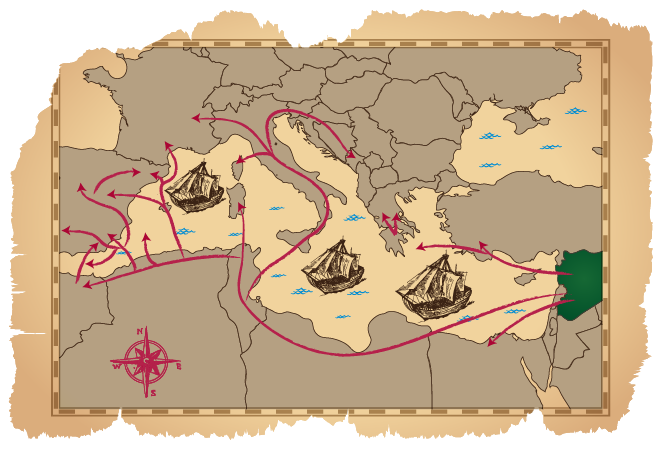Syria is known worldwide as the cradle of civilization but experts aslo claim that the wild olive tree was
first born and cultivated in Pheonicia, an ancient maritime country that was located in present-day Syria
and Lebanon. Vestiges, such as written tablets, olive pits and wood fragments have been discovered in
ancient tombs in Syria attesting of the olive tree cultivation as early as 3000 B.C.E.
From there, the cultivation of the olive tree spread to the island of Cyprus and on towards Anatolia. The
Phoenicians started propagating the olive to Greek isles via Anatolia in the 16th century B.C. Between the
14th and 12th centuries B.C., the olive was introduced to the Greek mainland, where its cultivation
developed and became major in the 4th century BC. From the 6th century onward, the cultivation of olive
trees extended to Tripoli, Tunis, and the island of Sicily. The cultivation spread from south to north
Italy, from Calabria to Liguria. When the Romans arrived in North Africa, the Berbers knew how to graft wild
olives and had already developed its cultivation throughout their territories. With the expansion of the
Roman Empire, the olive spread to the whole Mediterranean basin. Later, in 1050 B.C. the maritime domination
of the Phoenicians introduced the olive into Spain. The Arabs have had a major influence in the spread of
the cultivation, by bringing their varieties with them to the south of Spain.







